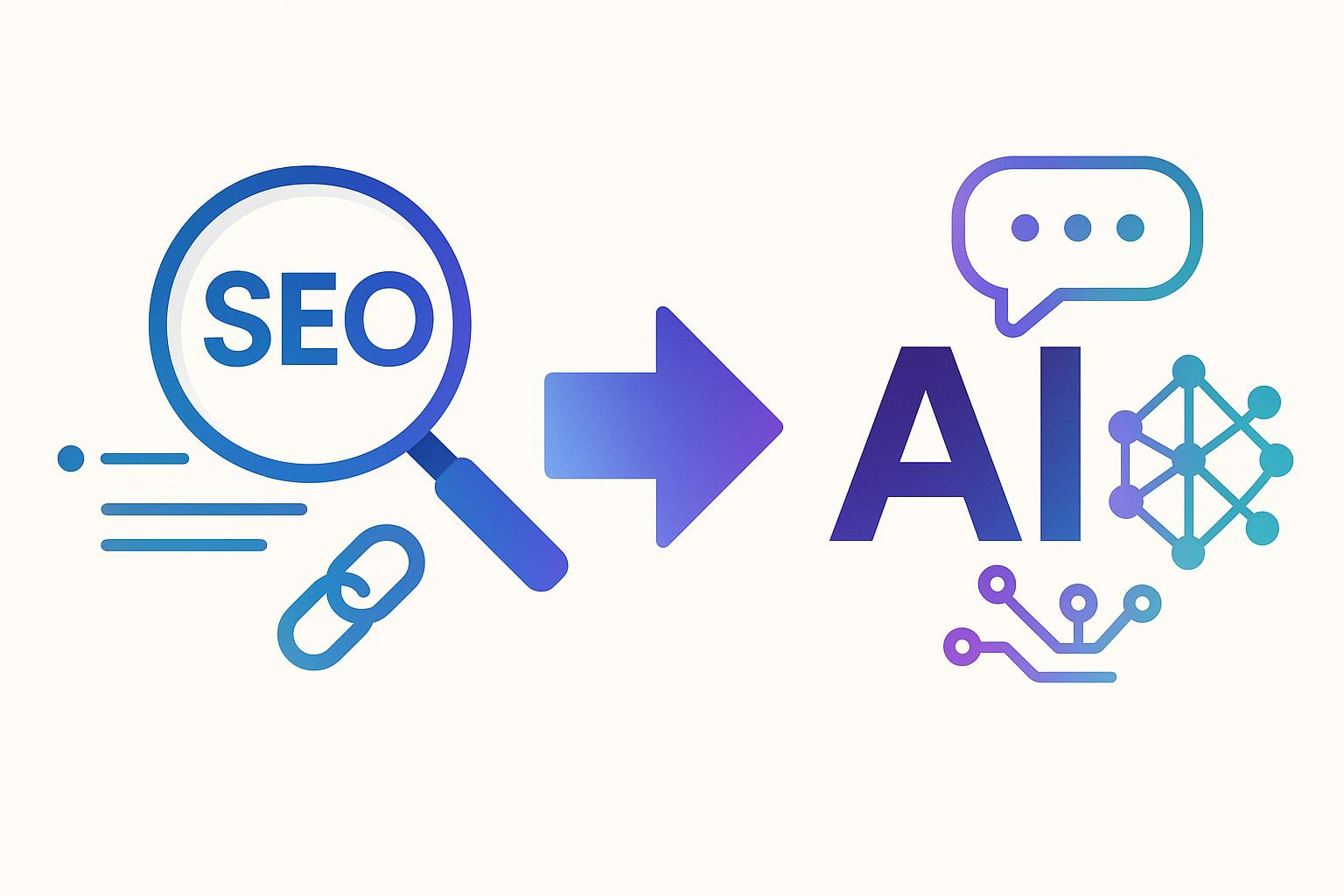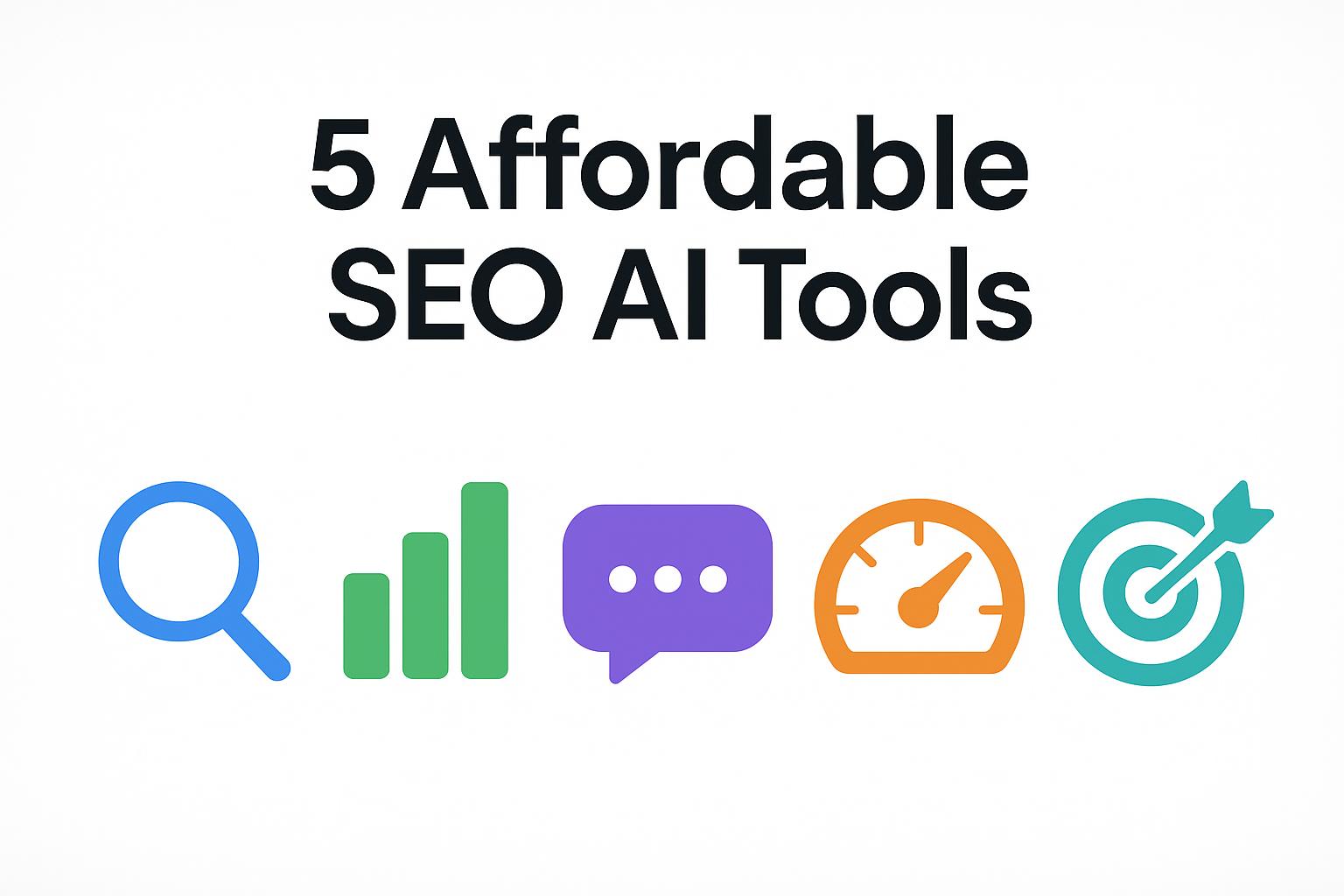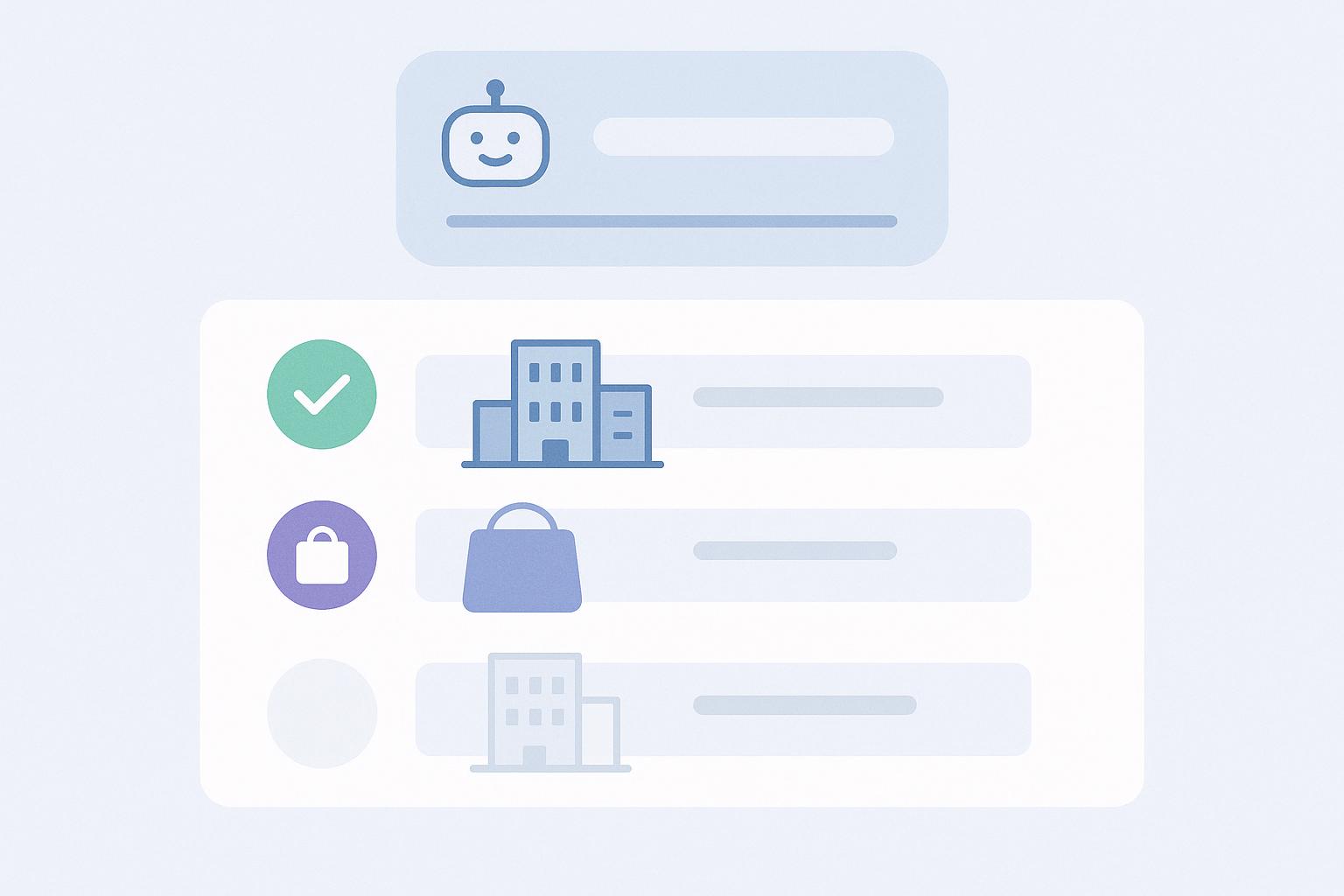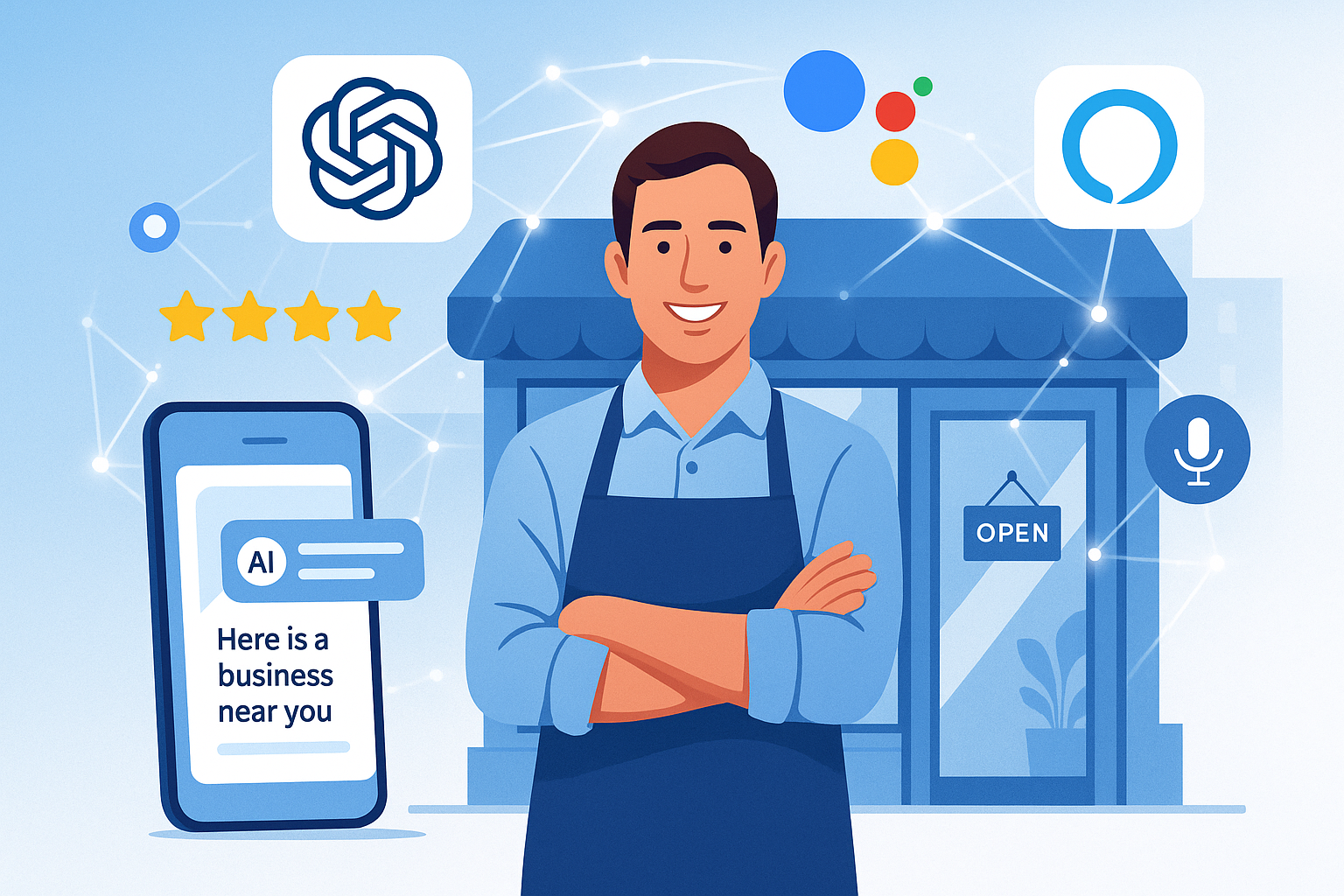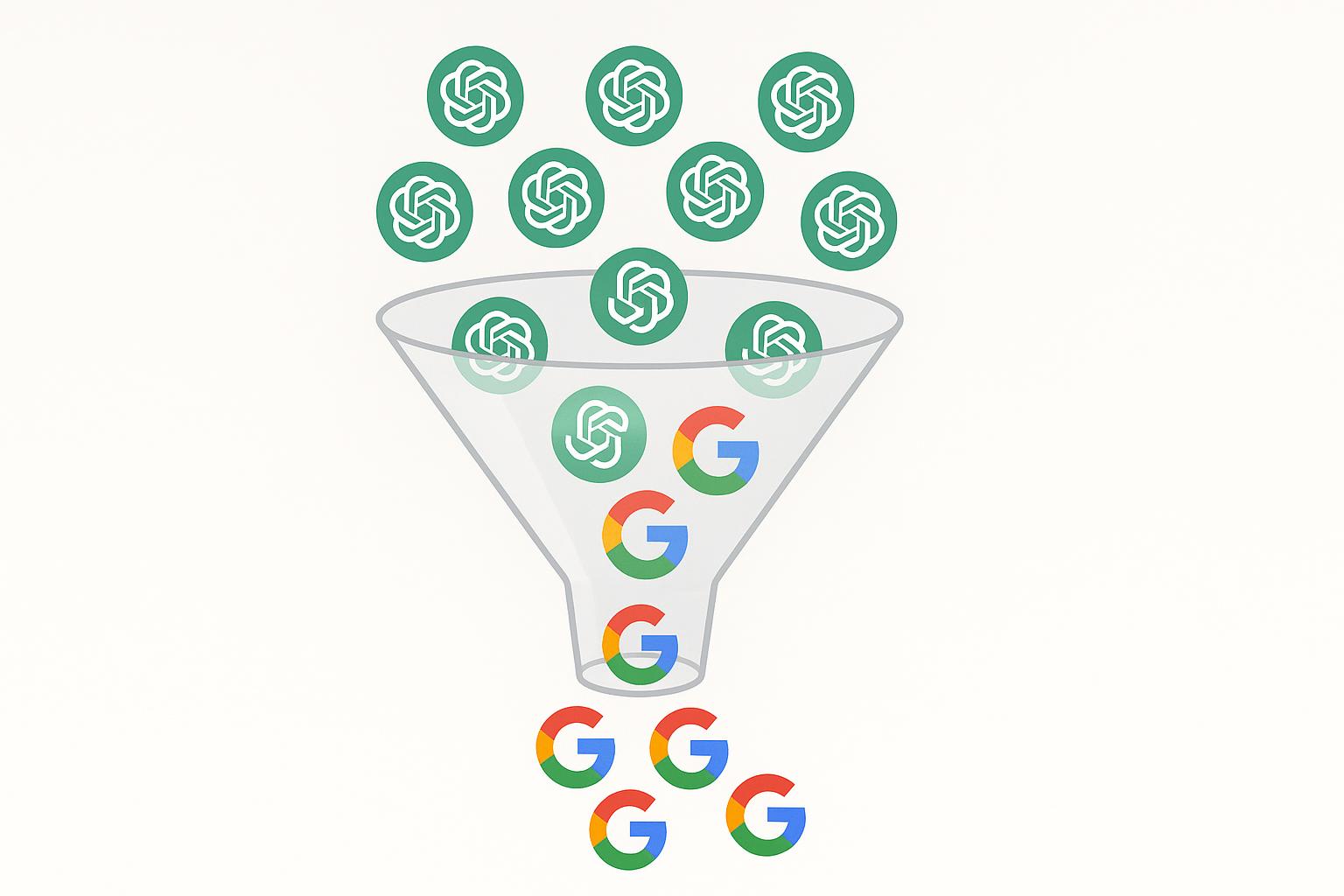The ground is shifting beneath the feet of digital marketers. For two decades, Search Engine Optimization (SEO) has been the undisputed king of digital discovery, a complex but understandable discipline for getting content in front of human eyes. But the explosive rise of generative AI like ChatGPT, Google’s AI Overviews, and Perplexity has introduced a new, disruptive player: AI SEO—also known by various names including AI Visibility Optimization (AIVO, our preferred term), Generative Engine Optimization (GEO), AI Search Optimization (AISO), and Answer Engine Optimization (AEO).
Suddenly, the familiar game of keywords and backlinks is evolving. Businesses are asking urgent questions: Is traditional SEO dead? What exactly is AI SEO, and how is it different? And most importantly, how do we adapt to win in this new era?
This guide will cut through the noise. We’ll provide a comprehensive breakdown of the similarities, the critical differences, and the practical steps you need to take to ensure your brand remains visible not just in search engine results pages, but within the AI-generated answers that are rapidly becoming the new starting point for discovery.
What is Traditional SEO? A Quick Refresher
Before diving into the new landscape, let’s ground ourselves in the familiar. Search Engine Optimization (SEO) is the practice of optimizing your website and its content to rank higher in search engine results pages (SERPs) on platforms like Google and Bing. The ultimate goal is to increase the quantity and quality of organic (non-paid) traffic to your site.
SEO is a multifaceted discipline traditionally broken down into three core pillars:
-
On-Page SEO: Optimizing individual web pages to rank higher and earn more relevant traffic. This includes keyword research, content quality, title tags, meta descriptions, and internal linking.
-
Off-Page SEO: Actions taken outside of your own website to impact your rankings. This is largely driven by building authority and trust, primarily through earning high-quality backlinks from other reputable websites.
-
Technical SEO: Optimizing the technical aspects of your website to help search engine crawlers find, understand, and index your content more effectively. This involves site speed, mobile-friendliness, site architecture, XML sitemaps, and structured data (Schema markup).
For years, the goal of SEO has been clear: when a user types a query, you want your website to appear as one of the top “10 blue links” on the results page.
What is AI SEO? The New Frontier of Visibility
AI SEO/AIVO is the process of optimizing your brand to appear in generative answers provided by AI language models like ChatGPT, Google AI, Perplexity, and Claude.
This represents a fundamental shift in objective: instead of competing for a click on a search results page, you’re competing to have your information, brand, or products directly mentioned and recommended within the AI’s generated response. You are optimizing to become part of the answer itself, not just a link in a list.
Instead of competing for a click on a SERP, you are competing for a mention in a paragraph of text synthesized by an AI. This means your content needs to be not just discoverable by the AI, but also trustworthy, clear, and valuable enough for the AI to use as a foundational source for its answer.
How AI-Powered Search Actually Works
To understand how to optimize for AI, you first need to understand how these models find information. It’s not magic; it’s a technical process that generally operates in two distinct ways.
Type 1: The Model’s “Long-Term Memory” (Training Data)
Large language models like OpenAI’s GPT series, Google’s Gemini, and Anthropic’s Claude are trained on massive, internet-scale datasets. This training data includes a colossal snapshot of the web, books, academic papers, and other text sources.
-
How it works: This information is compressed and stored as vector embeddings, which are complex numerical representations of concepts, words, and their relationships. Think of it less like a database of text and more like a hyper-complex encoded “gist” of human knowledge that forms the model’s long-term memory. When you ask a question that can be answered from this core training data, the AI retrieves the answer from its foundational knowledge base.
-
The Catch: This core training data is not updated in real-time. A model’s “inception,” or the process of being trained on a new dataset, might only happen every six months or even less frequently. Therefore, information about very recent events or products won’t be in the model’s inherent memory. Visibility here is about being part of the foundational knowledge of the internet over the long term.
Type 2: Real-Time Web Searches
For questions about current events, specific product details, or anything requiring up-to-the-minute information, AI models search the web in real-time.
-
How it works: The AI model acts like a hyper-efficient researcher. It formulates search queries and sends them to a search engine (like Google, Bing, or their own). It then retrieves relevant text from the top-ranking pages, incorporates this information into the conversation context, and synthesizes it into a cohesive answer, often providing citations or links to its sources. While sometimes called Retrieval-Augmented Generation (RAG), it’s more accurately described as web search and text extraction—the AI grabs relevant content and uses it to inform its response.
-
The Key Detail: These AI-generated queries are not like human queries. They are far more specific and complex. Our observations show that where a human might type “best CRM,” an AI performing a RAG search might generate multiple, highly specific queries to gather comprehensive data like “best CRM small business pest control easy retrieve contacts”.
-
Google’s AI Overviews tend to use queries that are around 5 keywords long.
-
OpenAI’s ChatGPT (when Browse) often uses even more detailed queries, sometimes 8-12 keywords long.
This means AI SEO for real-time web searches is fundamentally a long-tail query game.
Where SEO and AI SEO Overlap: The Foundational Similarities
Before you throw your entire SEO strategy out the window, it’s crucial to understand that a strong SEO foundation is the launching pad for successful AI SEO. The two are deeply intertwined, and many of the best practices you already follow remain essential.
You Still Need Rock-Solid Authority
The concept of E-E-A-T (Experience, Expertise, Authoritativeness, and Trust) is arguably even more important for AI SEO. When an AI model decides which sources to trust in a real-time search, it heavily relies on the same authority signals Google uses. A strong backlink profile from reputable, relevant sites tells the AI that your content is trustworthy and a reliable source of information.
High-Quality, Unique Content is King
This axiom of SEO is magnified in the AI era. AI models are designed to synthesize information and avoid plagiarism. They need high-quality, unique, and factually accurate source material. If your content is generic, thin, or simply rehashes what others have said, an AI has no reason to cite it. Provide unique data, novel insights, or a truly comprehensive overview of a topic to stand out.
Good Technical SEO Structure is Mandatory
A well-structured website is easy for both search engine crawlers and AI crawlers to understand. Key elements remain critical:
-
A logical site hierarchy
-
Clean, descriptive URLs
-
A comprehensive XML sitemap
-
Good internal linking practices to distribute authority and provide context
-
Use of structured data (Schema markup) to explicitly define what your content is about (e.g., this is a product, this is a review, this is an FAQ).
Keyword Relevance is Still a Guiding Light
While the nature of queries is changing (more on that later), keywords are still the fundamental building blocks of search. Both traditional and AI searches use keywords to identify relevant documents. Your content must be optimized around the core topics and terms your audience—and the AIs serving them—are using.
The Critical Differences: How AI SEO Changes the Game
This is where marketers must pay close attention. The differences between SEO and AI SEO are not trivial; they require significant shifts in strategy, technical implementation, and content creation.
Difference #1: Audience — Optimizing for Machines vs. Humans
This is one of the most profound conceptual shifts:
-
Traditional SEO: You optimize for a human to find your link in the SERPs, click it, and have a good experience on your page. Visual appeal, user interface (UI), and engagement metrics like time on page are paramount. A beautiful website that uses slick animations and interactive elements to keep users engaged is often preferred.
-
AI SEO: You are primarily optimizing for a machine to ingest, parse, and summarize your content. The AI crawler doesn’t care about your beautiful design or your clever animations. It cares about raw, structured, easily accessible information. The goal is machine readability first, human readability second.
You will still need to optimize for user-behavior as length of time on the page is still considered to get on top of the search results used by the AI models, but you now also need to fully optimize for a quick AI model to read in real-time.
Difference #2: Technical Execution — The JavaScript Blind Spot
This is a direct consequence of optimizing for machines.
-
Traditional SEO: Modern websites built on JavaScript frameworks like React, Vue, or Angular are perfectly acceptable for Google, as Google’s crawlers are sophisticated enough to render most JavaScript and see the final, client-side loaded content.
-
AI SEO: This is a major pitfall. When an AI chat application performs a real-time web search for a chat query, its crawler is often much simpler. It will typically only read the initial HTML that is delivered from the server. It will not execute client-side JavaScript. This means if your crucial content only loads after a series of JS functions run in the user’s browser (like many React components), the AI crawler will never see it. The page will appear blank or incomplete to the machine.
Key Takeaway for Developers: For content to be visible to AI crawlers, it must be rendered on the server-side (Server-Side Rendering - SSR) or pre-rendered into static files (Static Site Generation - SSG). Content must be present in the initial HTML payload.
Difference #3: Content Freshness — The 90-Day Recency Bias
The value of content over time is viewed differently.
-
Traditional SEO: A well-written, comprehensive “evergreen” article can hold a top ranking for years. Google understands that foundational content remains valuable even if it’s a few years old, as long as it’s still accurate.
-
AI SEO: There appears to be a strong recency bias, especially for real-time searches. Our research shows that models like OpenAI’s and Perplexity’s crawlers gravitate heavily towards pages that have been created or updated within the last 90 days. The logic is that any information older than that is likely already incorporated into the model’s core training data. For new or evolving topics, freshness signals relevance and timeliness.
Difference #4: Personalization — Mild vs. Hyper-Personalized
The level of personalization is orders of magnitude greater with AI chat.
-
Traditional SEO: Google search is mildly personalized. It uses your location, device, and recent search history to slightly tailor the results you see. However, two different users in the same city searching for the same term will see broadly similar results.
-
AI SEO: AI chat is heavily personalized. AIs now store memory of previous conversations about your persona—who you are, what you do, what your preferences are. When you ask, “What is a good CRM?”, it doesn’t just answer in a vacuum. It remembers your company size, industry, location, budget constraints, and feature priorities from both the current conversation and previous interactions. The AI maintains a persistent understanding of your persona and provides answers tailored to your specific context and history. Two users asking the exact same question will get wildly different answers based on their stored persona and conversational history.
Difference #5: Query Structure — Standard Keywords vs. Complex Long-Tail
We touched on this earlier, but it’s worth re-emphasizing.
-
Traditional SEO: You target both short-tail (“CRM software”) and long-tail (“best CRM for a small real estate agency”) keywords that humans would realistically type. Tools like Ahrefs and SEMrush help you find these keywords based on actual user search behavior.
-
AI SEO: You’re targeting the query terms used by the AI when it reaches out and performs its web searches. While similar to user queries, the words are often slightly different and there are typically far more keywords (8-12 on average for ChatGPT). The AI generates highly specific, machine-generated queries on the fly. To be a source for these searches, your content needs to answer very specific, nuanced, and complex questions. For AI SEO/AIVO, use a tool like RivalSee that surfaces the actual keywords ChatGPT, Google AI, and others use when doing real-time searches.
Difference #6: Funnel Focus — Top-of-Funnel vs. Bottom-of-Funnel
The value of different types of content changes dramatically.
-
Traditional SEO: Creating top-of-funnel (ToFu) content, like blog posts explaining broad concepts (“What is Inbound Marketing?”), was a fantastic strategy. You could educate potential customers early in their journey and build brand awareness.
-
AI SEO: The goal is to get your brand recommended by name. AI models are excellent at ingesting multiple top-funnel articles and summarizing them into a concise answer often without citing any specific source. The AI becomes the destination for that knowledge. Where AI SEO/AIVO particularly shines is further down the funnel. AI is more effective for bottom-of-the-funnel (BoFu) queries—things like comparing specific products, listing pros and cons, or providing curated lists of options for a specific use case. This is where brands can get mentioned and recommended by name.
Difference #7: Speed — Important vs. Mission-Critical
The penalty for a slow site is much more severe.
-
Traditional SEO: Page speed is a known ranking factor. A faster page gets a bonus from Google, and a slow page might be penalized, but it will still likely get indexed and have a chance to rank.
-
AI SEO: Speed is one of the absolute top features. In a real-time RAG search, the AI crawler is trying to gather information from multiple sources very quickly. If your site takes too long to respond with its initial HTML payload, the crawler will simply time out and move on. Your page won’t just be penalized; it will be completely ignored. It becomes a pass/fail test.
How to Adapt Your Strategy for AI SEO: A 5-Step Plan
Understanding the differences is the first step. Taking action is the next. Here is a practical framework for adapting your digital strategy to this new reality.
Step 1: Conduct an AI Visibility Audit
You can’t optimize what you don’t measure. Before making any changes, you need a baseline. How often is your brand, your products, or your content being mentioned by major AI models right now?
There are two ways to approach this:
1. The Manual Method: This is time-consuming but free. Open incognito windows for ChatGPT, Perplexity, Claude, and Google’s AI Overviews. Manually create different user personas and ask questions from their perspective. For example:
-
Persona 1 (Small Business Owner): “What are the top 3 accounting software for a company with 10 employees?”
-
Persona 2 (Enterprise Marketing Director): “Compare HubSpot vs. Salesforce for a B2B tech company.”
-
Persona 3 (Freelance Designer): “List some project management tools that integrate with Figma.”
Document every query and every response. Note when your brand is mentioned, when a competitor is mentioned, and what sources are being cited.
2. The Automated Platform Method: As the need for this has grown, a new category of software has emerged. Tools like RivalSee are emerging to solve the problem of AI visibility. RivalSee, for example, automates the process of auditing your visibility by using persona-driven conversations to simulate real customer queries at scale across multiple AI engines (ChatGPT, Claude, Google AI, etc.). It then tracks your mention rate, analyzes competitor visibility, and provides actionable recommendations. This gives you a clear, data-driven baseline and ongoing monitoring. While many traditional SEO platforms like Semrush and Ahrefs are adding AI features, specialized AIO platforms are built from the ground up to address the unique challenges of this new ecosystem.
Step 2: Re-evaluate Your Content for Machine Readability
Review your most important pages through the “eyes” of a machine.
-
Simplify Language: Use clear, direct language. Avoid excessive jargon or overly clever prose.
-
Use Structure: Employ clear HTML headings (H1, H2, H3), bulleted lists, and numbered lists to break up information into logical chunks.
-
Create FAQ Sections: Add FAQ sections to your key product and service pages that directly answer the specific, long-tail questions an AI might ask.
-
Implement Schema Markup: Use structured data to explicitly tell the AI what your page is about. Product schema, Review schema, and FAQPage schema are particularly powerful.
-
Fix the JavaScript Problem: Audit your site to ensure all critical content is delivered in the initial server response. Work with your developers to implement SSR or SSG if necessary.
For a deeper technical audit, you can use this free technical SEO Audit prompt provided by RivalSee. When used with a coding AI like Claude Code, it can help you quickly identify critical issues like missing schema markup or important content that is hidden from AI crawlers by JavaScript, giving you a clear, actionable roadmap for your development team.
Step 3: Prioritize Bottom-of-the-Funnel and Comparative Content
Shift some of your content creation resources away from broad, top-of-funnel topics and towards more specific, decision-stage content.
-
Create Direct Comparison Pages: “Salesforce vs Spreadsheet” or “Our Product vs. Competitor X.”
-
Develop “Best Of” Lists for Niches: “The 5 Best AIO Platforms for Agencies” or “Top AI Visibility Tools for E-commerce Brands.”
-
Build Detailed “Alternatives To” Pages: “Top 5 Alternatives to Competitor Y.”
-
Answer Use-Case-Specific Questions: “How to track brand mentions in Google’s AI Overviews.”
This is the content that is most likely to be surfaced in a BoFu query and result in a direct brand mention.
Step 4: Implement a Content Freshness Strategy
You can no longer let your core content sit untouched for years.
-
Schedule Quarterly Reviews: For your most important pages (product pages, category pages, key informational articles), schedule a review at least once every 90 days.
-
Make Meaningful Updates: Don’t just change a comma. Add a new paragraph, update statistics, add a new customer testimonial, or refresh the FAQ section.
-
Update the “Last Updated” Date: Make sure your CMS displays a “last updated” or “last reviewed” date and that it’s updated when you make changes. This is a direct signal of freshness to crawlers.
Step 5: Master Persona-Based Optimization
This is the most advanced step. Stop thinking about single keywords and start thinking about the user personas that are interacting with AI.
-
Map Your Customer Personas: Who are your ideal customers? What are their job titles? What are their biggest challenges? What is their level of technical expertise?
-
Anticipate Their Conversations: Brainstorm the multi-turn conversations they might have with an AI. What initial questions would they ask? What follow-up questions would they have?
-
Create Content That Answers the Entire Conversation: Your content should be a resource that can satisfy the entire chain of inquiry for a given persona.
This is another area where dedicated AI SEO/AI-VEO platforms are invaluable. RivalSee, for example, is built around this exact concept of persona-based query tracking. It allows you to define specific user personas and automatically tests how they would encounter your brand in an AI conversation, giving you precise insights into where your content is succeeding or failing for your most important audience segments.
The Future of Optimization: A Hybrid SEO and AI SEO Approach
The rise of AI Visibility Optimization does not signal the death of traditional SEO. Rather, it marks the beginning of a more complex, hybrid era. The two are symbiotic.
Your authority, technical foundation, and high-quality content from traditional SEO are the price of entry for AI SEO. You cannot succeed in AIO without a solid SEO base. The future of search visibility requires a dual-pronged approach:
-
Continue to optimize for human-centric search on Google and Bing, targeting clicks and on-page engagement.
-
Simultaneously, adapt your technical setup and content strategy to optimize for machine-centric ingestion and summarization by AI models.
Monitoring your performance in this new arena is non-negotiable. Keeping track of rankings in SERPs is no longer enough. You must also track your mention rate and sentiment within AI-generated answers, which is why platforms like RivalSee that are designed to track AI mention rates are becoming an essential part of the modern marketer’s toolkit.
Conclusion: Embrace the Evolution
The differences between traditional SEO and AI SEO are significant and demand a real evolution in our thinking and execution. The shift from a human-first to a machine-first optimization audience, the technical intolerance for client-side JavaScript, the intense bias towards recency and hyper-personalization, and the new focus on bottom-of-the-funnel content represent a paradigm shift.
However, this change brings incredible opportunity. Brands that adapt quickly will gain a powerful first-mover advantage, embedding themselves as trusted sources within the AI answers that will guide the next generation of customers.
Your actionable next step is simple: Start auditing. Use the manual methods or investigate a dedicated platform like RivalSee to understand where you stand today. For a practical guide on tracking your AI mentions, check out our post on how to track AI mentions. Don’t wait for your visibility to decline. The future of search is already here, and the time to optimize for it is now.
